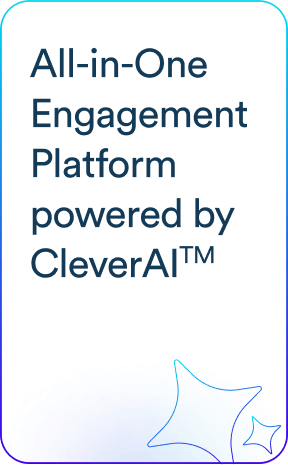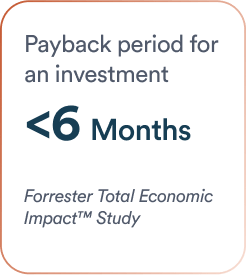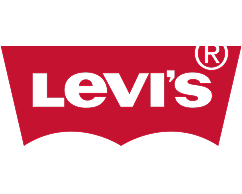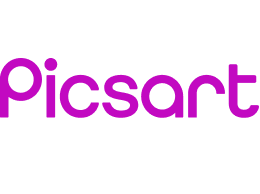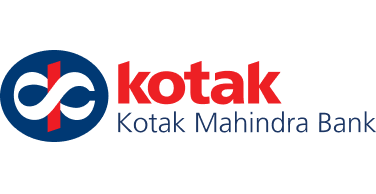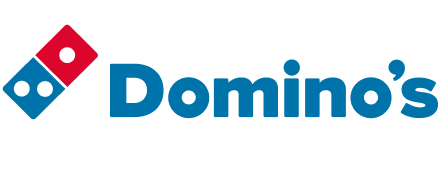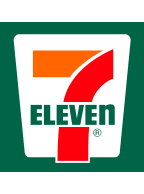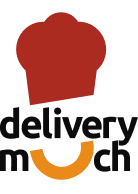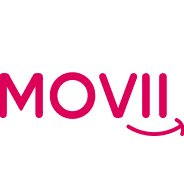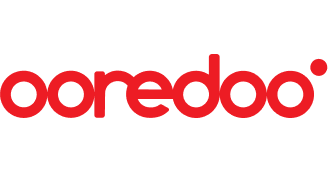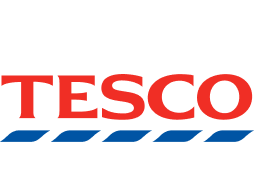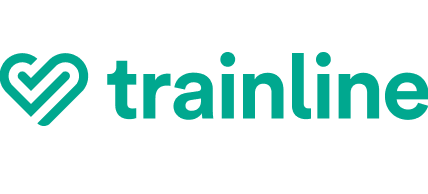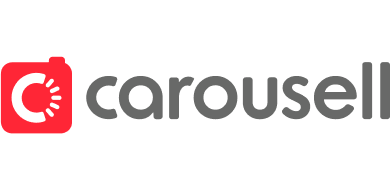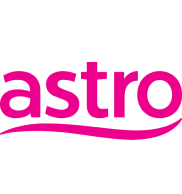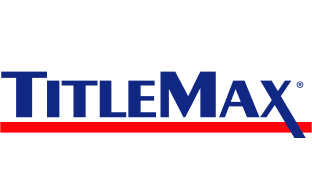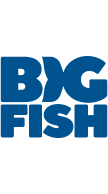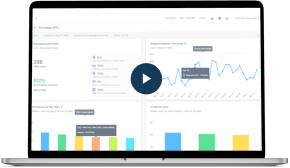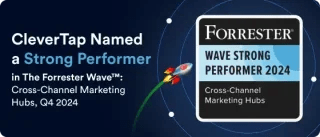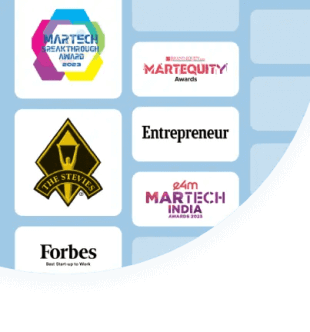With an average return on investment of $36 for every dollar spent, email marketing is still one of the most effective methods for businesses to reach their audience. However, marketers can only achieve their campaign goals when they follow essential email marketing best practices.
This blog will cover 35 practical, modern, and field-tested email marketing tips that help optimize campaigns for desired results.
Why Email Marketing Still Matters
As consumer attention spans shrink, social media has become a strong competitor to traditional marketing channels. Many businesses are also turning to push notifications to stay top of mind.
Despite these modern tactics, email campaigns continue to play a crucial role in a well-rounded marketing strategy. In fact, email marketing is 40 times more effective than social media and other platforms. This is because emails are easy to deliver, cost-effective, with a high email marketing ROI ($36 for every $1), and aren’t affected by third-party algorithm changes or platform policy shifts.
Let’s explore the email campaign best practices now.
Email Marketing Strategy and Planning Best Practices
Here are five email marketing best practices that focus on setting goals and aligning them with success metrics, choosing the right email format, mapping emails to funnel stages, and segmenting the audience.
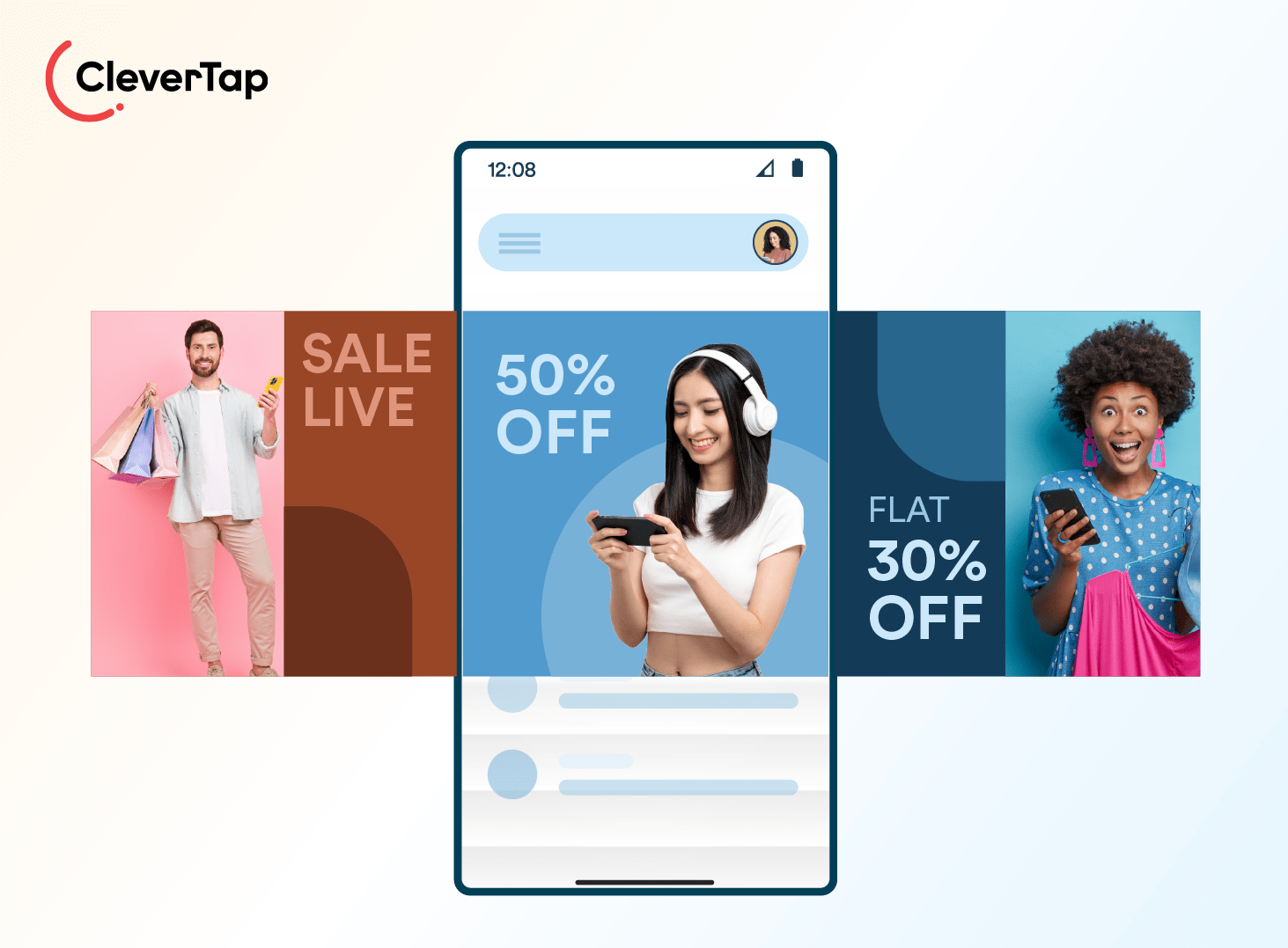
1. Define SMART Goals for Every Campaign
Follow the SMART framework while setting goals for email campaigns. The goals should be
Specific
Measurable
Achievable
Relevant
Time-bound
An example of a SMART goal is to increase the online store sales by 30% in the next 3 months through targeted email marketing campaigns and optimization of top-performing product pages.
This goal is SMART because it is:
- Specific: A 30% increase in online sales through email marketing and product page optimization.
- Measurable: A 30% increase in online sales can be measured by tracking revenue-related metrics.
- Achievable: With the right marketing budget and resources, the expectation of achieving the goal in the provided time frame is realistic
- Relevant: Boosting sales and enhancing user experience is relevant to the business objective.
- Time-bound: The goal has a deadline of three months.
2. Choose the Right Email Format Based on Intent
Choose an email format that matches the purpose of your message. The right email format increases engagement, improves deliverability, and boosts conversions.
This table outlines email formats for different intents in an e-commerce setting.
| Intent | Email Format |
| Welcome/Onboarding | Warm, branded HTML email with clear next steps and value highlights |
| Promotion/Sale | Visually engaging, bold CTAs, product images, and discount codes |
| Abandoned Cart Reminder | Personalized email, product visuals, urgency language, and simple CTA |
| Newsletter/Education | Balanced layout, short articles, links, or videos to inform and engage |
| Feedback/Survey | Short, mobile-friendly, one clear ask, and a link or embedded form |
3. Align Goals to Success Metrics
As discussed in point 2, the advantage of setting SMART goals is that they are aligned with specific, measurable success metrics.
If the campaign aims to increase brand awareness, measure open rate, click-through rate, reach, and impressions.
If lead generation is the desired result, track email marketing conversion rate, form submissions, and the number of new subscribers or contacts.
The performance indicator to be tracked will depend on the campaign goal.
4. Map Emails to Different Funnel Stages
Tailor email content to match where users are in their journey. This targeted approach ensures relevant messaging reaches the audience when they are ready for it and increases the chances of converting prospects to paying customers.
Here’s how to map emails to funnel stages:
- Awareness: Introduce brand and value proposition with welcome emails and educational content.
- Consideration: Share feature insights, blog posts, testimonials, or case studies to help prospects evaluate options.
- Conversion: Use urgency-driven emails like free trials, discounts, or limited-time offers to nudge action.
- Retention: Keep customers engaged with thank-you emails, personalized deals, and feedback requests.
Learn how to boost customer retention using these tailored retention-boosting email strategies.
5. Segment Campaigns Based on Persona and Behavior
Email segmentation is one of the most effective email marketing best practices. It prevents sending irrelevant content that overwhelms and annoys subscribers.
Segmentation allows identification of patterns and behaviors that the human eye might miss. The subscriber list can be divided or segmented in the following ways:
- Demographic Segmentation: Based on age, income, gender, and education
- Psychographic Segmentation: Based on lifestyle, personality, interests
- Behavioral Segmentation: Based on past behavior and interactions
- Geographic Segmentation: Based on location, such as country, region, city, or even time zone
Craft emails to match each segment’s needs and intent.
Email List Building and Subscriber Management Best Practices
Here are 10 email marketing best practices to maintain a healthy email list and manage subscribers.
6. Use Double Opt-In to Ensure List Quality
Every contact in the email list should be added only after they have given consent. Implement a double opt-in strategy to add subscribers who genuinely want to receive your content to your email list.
The strategy asks users to confirm their consent to receive future emails by clicking a link in a confirmation email. It reduces fake sign-ups and ensures accurate email addresses, improving the list quality and maintaining sender reputation.
7. Offer Multiple Lead Magnets Across Customer Journeys
A single and generic lead magnet will not work because not all visitors are in the same buying journey stage. Offer multiple lead magnets that cater to different user intents and behavior. This practice increases opt-in rates and improves lead quality.
For example, use pop-ups with discounts for first-time visitors, gated content for blog readers, and exclusive access offers for returning users. Test different formats and placements to see which works best in generating leads via email marketing.
8. Place Sign-Up Forms Across Key Website Locations
Strategically place sign-up forms in website locations that have maximum visibility to capture more leads. You can place the sign-up forms on email landing pages, footers, blogs, contact us, and product pages.
Visitors will engage with different sections of your website, so spreading the forms across key website locations offers multiple touchpoints. This will help grow your email list. Keep the form short, simple, and user-friendly to keep the visitors engaged.
9. Use Pop-Ups Thoughtfully
Pop-ups can be annoying, but when thoughtfully placed, they capture attention without disrupting the user experience. Use exit-intent and scroll-triggered pop-ups to avoid being overly intrusive.
The pop-up should provide enough value to stop the visitor from exiting the page. They can be a sign-up form, an offer, or a discount.
Exit-Intent Pop-Ups: They appear when the visitor is about to leave the website.
Scroll-Triggered Pop-Ups: They appear when the visitor has scrolled through a certain percentage of the page.
10. Avoid Purchased Lists at All Costs
Building an email list from scratch can be overwhelming, but it’s better than risking your service provider shutting down your account. Avoid purchasing email addresses from third parties to not hurt your email marketing strategy. A lot of these purchased emails are fake and impact your engagement.
You can also get blacklisted by email service providers (ESPs) and anti-spam services. Moreover, it is a waste of resources as people who do not opt in will not engage with your emails in any case.
11. Sync Data From CRM and Third-Party Platforms
CRM and other third-party platforms provide real-time data with accurate customer insights and a comprehensive view of the audience across the buyer journey.
The segmentation and personalization of email campaigns become more effective when information like lead status changes, purchase history, and past interactions is easily accessible from the CRM. The seamless data flow from these platforms reduces manual effort, avoids outdated or duplicate information, and helps deliver timely, relevant messages.
Platforms equipped with native CRM and third-party integrations, like CleverTap, help ensure that data remains clean, up-to-date, and actionable across all touchpoints.
12. Auto-Tag Users Based on Behavior and Acquisition Source
Automatically tag users based on how they signed up or on their actions to segment the audience better. Tagging allows marketers to send personalized emails without manual sorting.
Here are some examples:
- Made a purchase: Tag them as a Customer
- Clicked on a product link: Tag them as Prospect
- Acquired via a PPC Campaign: Tag them as Paid Search Lead
- Inactive for 90 days: Tag them as Unengaged
- Signed up using a referral link: Tag them as Referral
13. Regularly Clean and Purge Inactive Contacts
Dedicate time regularly to comb through your email list and remove inactive contacts and subscribers that have stopped engaging. When emails are ignored for a long period, the ISPs can consider them spam, impacting the delivery rate and engagement.
Maintain email list hygiene for good engagement, higher delivery rates, and accurate performance data.
Platforms like CleverTap can help automate this process by identifying low-engagement users through behavioral segmentation. You can also set up workflows to suppress or gradually phase out these contacts without disrupting active campaigns.
14. Use Sunset Policies for Disengaged Subscribers
Another email marketing best practice for building quality lists is to use a sunset policy. It involves the gradual removal of inactive subscribers from the list. A good way to do this is to reduce the frequency of emails sent to unengaged subscribers over time.
Set up a final re-engagement campaign with a compelling offer and remove those who do not respond. Using the sunset policy keeps the email list updated with active and engaged subscribers.
15. Let Users Manage Preferences
Give your audience the option to control their engagement experience with the brand. CleverTap provides a preference center feature that allows users to customize their communication preferences.
Let users choose their preferred communication channels, the type of content a business can send, and its frequency. Some might choose email newsletter and product updates, but refrain from getting promotional offers. By doing this, businesses gain insights into their audience’s behavior and preferences while building brand loyalty.
Email Content and Design Best Practices
Mentioned below are 13 email marketing best practices to consider while designing emails and writing the content.
16. Write Short, Relevant, and Compelling Subject Lines
The subject line is the first thing a recipient sees in their inbox. It should be relevant to the recipient and pique their interest in opening your email. Follow these tips while writing subject lines:
- Keep it short, about five to seven words or 40 characters.
- Avoid using spammy words.
- Personalize it by adding the recipient’s first name.
- The subject line should reflect what’s in the email.
- Keep the key topic toward the beginning, as subject lines may get cut off after the first few words.
- Ensure it is engaging and action-provoking, enticing them to open the email.
- Include a deadline for sales and sign-up emails.
Examples:
- Sam, your exclusive deal ends tonight!
- Customer Engagement Webinar: Join us on May 20, 2025
17. Add Engaging Preview Text That Supports The Subject
A preview text is a brief and engaging description of the email content that appears next to the subject line. Do not repeat the content of the subject line; build upon it. Use language that builds intrigue and creates a sense of urgency.
The subject line and preview text are complementary in increasing open rates and engagement. Here’s a subject line and preview text example of a cart abandonment email:
Subject Line: Still thinking it over? Your cart misses you!
Preview Text: You left something behind! Complete your purchase now and enjoy 10% off your order.
18. Avoid No-Reply Sender Addresses
Send emails from a real person’s account. No-reply email addresses do not allow you to receive replies and appear cold and unprofessional. This is one of the most overlooked email marketing best practices. If your customers cannot reply to an email you sent, you may miss out on valuable communication and also hamper the customer experience. No-reply email addresses are often marked as spam and impact email deliverability rates.
Learn how to improve email deliverability to boost your email performance.
19. Personalize Content Beyond First Names
Adding the recipient’s first name to subject lines and email content is not the only form of personalization. Personalized content can also be:
- Recommendation based on purchase history, browsing history, or on-site behavior
- Dynamic pricing or discounts based on customer value or activity
- Birthday or anniversary-based messages
- Reference to the previous email engagement
20. Set Up a Welcome Email or Onboarding Series
Set up a welcome email drip campaign to leave a strong first impression on new subscribers. This helps introduce users to your brand and sets their expectations for the kind of content they will receive.
Use the welcome email sequence to nudge subscribers into taking the next step in their buyer journey. Welcome emails also serve as the perfect opportunity to guide subscribers to the preference center, where they can set up the type of content they want to consume. You can then kickstart the entire onboarding email series to keep engagement high.
21. Maintain a Consistent Brand Voice and Tone
Be consistent in your brand guidelines and maintain the same voice and tone in all communications. Deviating from the brand identity can leave subscribers feeling unfamiliar and increase unsubscribe rates.
Follow email copywriting best practices to drive higher email engagement.
22. Place CTAs Early and Clearly
Provide the CTA early on in the email body, above the fold. Make it stand out and visible. If you place the CTA at the end of the email or bury it within text, subscribers might stop reading before reaching the CTA section.
23. Use Scannable Layouts
Make the email body easy to scan and engaging. Here are three ways to design the layout that make the email easy to scan:
- Introduce each section with clear and concise headings.
- Increase readability by using bullet points wherever permissible.
- Use white space to prevent clutter and separate visual elements.
24. Add Dynamic Content Based on Segments
Leverage the audience segmentation performed before to curate email templates with dynamic content – subject lines, images, greetings, visuals. Such emails with dynamic content blocks can be changed based on the target segment.
Many email marketing platforms like CleverTap offer dynamic content features. Marketers must regularly analyze campaign performance and refresh the content to keep it relevant and effective. CleverTap’s Scribe simplifies this by automatically generating emotionally intelligent subject lines and pre-headers aligned with each segment, helping sustain engagement at scale.
25. Use Interactive Elements Like Polls or AMP Modules
An email marketing platform like CleverTap can enrich the email user experience by enabling interactive email templates through AMP for Email technology. Using interactive elements like polls, feedback forms, or dynamic modules within the email increases engagement and drives quicker actions.
Recipients can take actions within the email without leaving their inbox. This streamlines the experience for users and provides marketers with real-time insights and feedback.
26. Optimize for Mobile-First
Optimize email designs for responsiveness across all devices. However, 50% of smartphone users prefer receiving business communications on email, making it essential to design mobile-responsive emails.
Here are some key elements of mobile-friendly email designs:
- Use single-column layouts for visual appeal and to improve readability on small screens.
- Use larger font sizes and font styles that are easy to read.
- Place CTAs on easily tappable and large buttons.
27. Add Alt Text for All Images and GIFs
Using images and GIFs can help capture the attention of subscribers and keep them interested. It is also recommended to add alt text, which appears if the image does not load. Keep the alt text short and descriptive while capturing the image context. This upholds mobile accessibility for visually impaired users by conveying the information presented through the image or GIF.
28. Keep Visual Branding Consistent
It is not only the email content that needs to be on brand; the visual elements should also be consistent across all platforms, including emails. When subscribers visit your website using a link from an email, the experience should be smooth, which is possible only when branding remains consistent.
Here are some email marketing best practices to maintain visual brand consistency:
- Keep the logo at the top and hyperlinked to your website.
- Use primary and secondary colors from the brand palette in the email design.
- Select font styles that align with your brand personality and use them across all communications.
Testing, Automation, and Optimization
This section contains 7 email marketing best practices that an email marketing platform should enable.
29. A/B Test One Element at a Time
It is a good practice to A/B test every part of the email and follow a data-driven email marketing strategy that helps you iterate. This kind of split testing provides insights into which variant works best and helps optimize email campaigns. Perform A/B testing for each element at a time.
A/B test emails with different versions of
- Subject lines
- Visuals and layouts
- CTAs
Compare results and send the high-performing version to the target audience.
30. Use AI For Send-Time Optimization
Most leading email marketing tools have embedded AI in email marketing capabilities that you can leverage without switching from the product interface, making the entire process seamless.
Such AI email marketing tools analyze behavior, demography, time zones, and engagement patterns to recommend optimal send times. Optimize email send times by combining AI recommendations with A/B testing.
Maximize open rates with AI-timed delivery. IntelliNODE learns from every interaction to improve send-time precision.
31. Automate Behavior-Triggered Sequences
Remember point 12, where we discussed auto-tagging users based on behavior? This will help marketers set up email automation workflows and automate behavior-triggered email sequences. Here are two examples.
Example A: Cart abandonment email sequence
- Send an initial abandoned cart email reminder within a few hours, highlighting the items in the cart.
- Follow up with a special discount or offer to nudge them towards a purchase.
- Send a final reminder and list of similar product recommendations if a purchase has not yet been made.
Example B: Subscriber inactivity email sequence
- Send a personalized welcome email after sign-up to introduce the brand.
- Provide a step-by-step guide or best practices to use the product (works best for banking and fintech, subscription services, SaaS brands, and gaming).
- Send a reminder or exclusive offer email following a period of no engagement (30 to 90 days).
32. Run Drip Campaigns Aligned with Lifecycle Stages
Create email drip campaigns that deliver emails relevant to the stages of the customer lifecycle. A welcome email drip campaign sequence will be different from a cart abandonment or inactive user drip campaign sequence.
Aligning email campaigns to customer lifecycle helps improve engagement at various touchpoints, maximizing conversion.
33. Use Predictive Segmentation
Predictive segmentation segments the audience by predicting behavior or actions. The method uses data analytics and machine learning. Marketers can pre-determine high-value and high churn-risk users to curate email campaigns for separate needs.
Predictive segmentation uses the following data:
- Age, gender, income, and other demographic information
- Purchase history, past website interaction, and other behavioral data
- Purchase frequency, average order value, and other transactional data
- Psychographic data like lifestyle preference and choice
34. Monitor Engagement By Segment, Not Just in Aggregate
Instead of monitoring the email engagement of the entire list, track how different segments interact with the emails. This activity will help marketers in the following ways:
- Personalize to better resonate with the segment’s needs and interests.
- Set up targeted campaigns for each segment.
- Build stronger customer relationships.
- Identify inactive or lost subscribers.
35. Track and Act On Metrics
Some of the top email marketing metrics that you need to track to optimize campaign performance include:
- Deliverability rates
- Open rates
- Click-to-open rate
- Click-through rates
- Conversion rates
- Bounce rates
However, not all metrics are relevant to every campaign. For example, for an email campaign inviting people to register for an upcoming webinar, the click-through rate is the key metric to monitor while the open rate would be more prudent for an email campaign containing an important company announcement in the body of the email.
Introducing CleverTap for Smarter Email Engagement
Marketers need a robust email automation platforms to incorporate these email best practices in their campaigns.
CleverTap is an all-in-one customer engagement and retention platform that provides actionable insights for refining your email campaigns. Its purpose-built email marketing tool, embedded with easy-to-use email templates, a versatile editor, AMP for email, A/B testing capability, advanced analytics, and more, helps you deliver timely, personalized, and interactive email experiences. Its AI features, segmentation, and automation capabilities make it a trusted choice for 2,000+ brands.
Explore how CleverTap can improve your email marketing campaigns.
Try CleverTap’s Intelligent Email Marketing Tools
Implement these email marketing best practices using CleverTap. Here’s how you can use the tool:
- Deliver contextual and personalized messaging to different audience segments using predictive segmentation and 1:1 email personalization tool.
- Perform A/B testing and run campaigns with different variants to get the best results.
- Use drag-and-drop functionality, HTML, or AMP support to create interactive emails.
- Optimize message send times by analyzing time zones and user activity periods.
- Monitor campaign analytics in real-time and optimize emails to get desirable results.
Use these email marketing best practices during seasonal campaigns to deliver even higher email performance. Explore 4th of July email marketing, Halloween email marketing, Thanksgiving email marketing, Black Friday email marketing, Cyber Monday email marketing, Christmas email marketing, and December email newsletter examples for inspiration.
Kiran Pius 
Leads Product Launches, Adoption, & Evangelism.Expert in cross-channel marketing strategies & platforms.
Free Customer Engagement Guides
Join our newsletter for actionable tips and proven strategies to grow your business and engage your customers.

